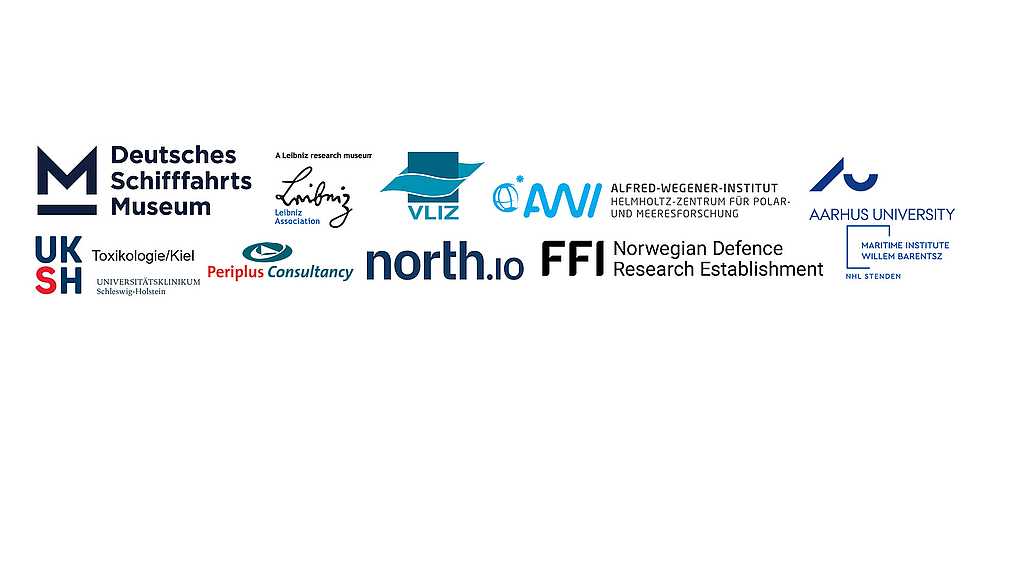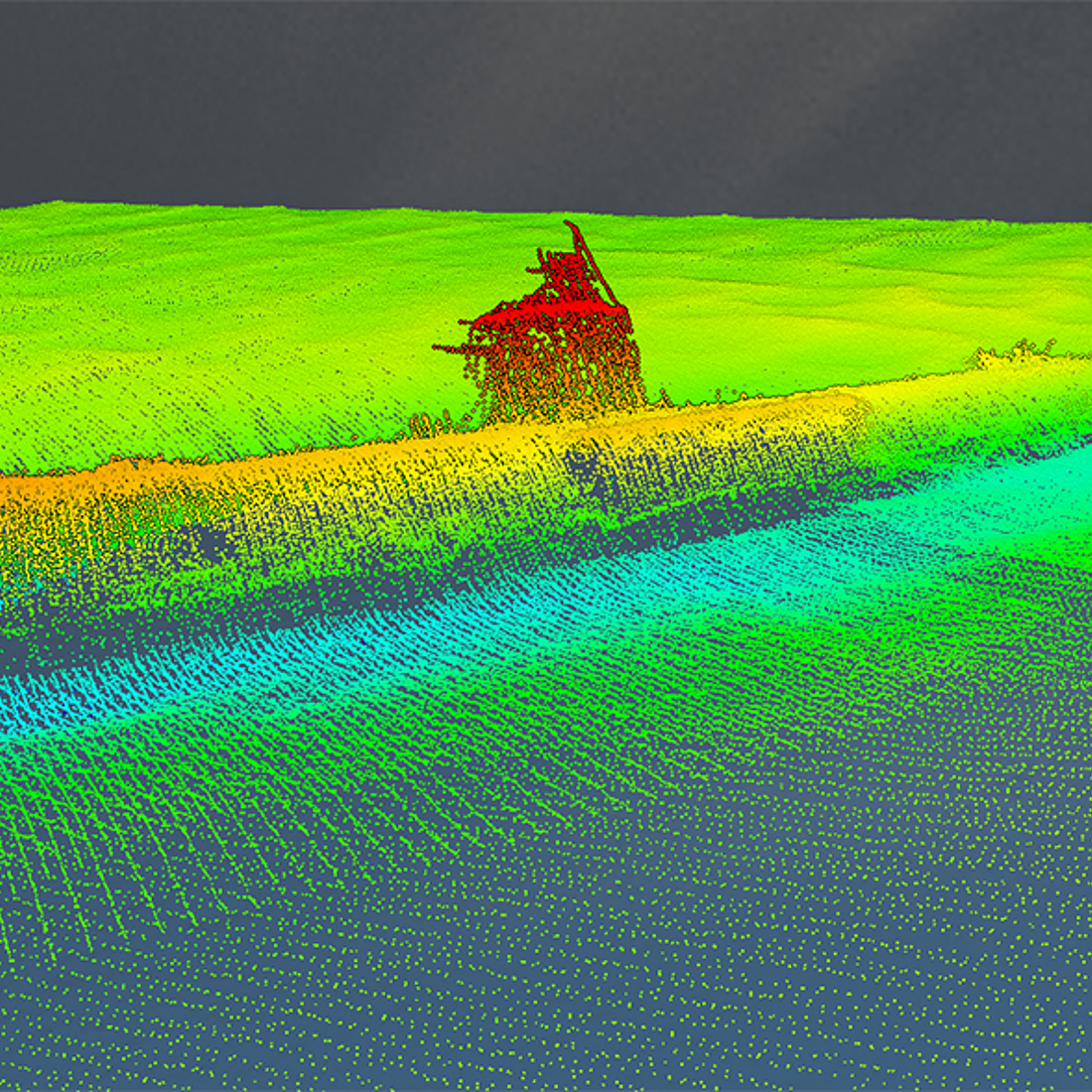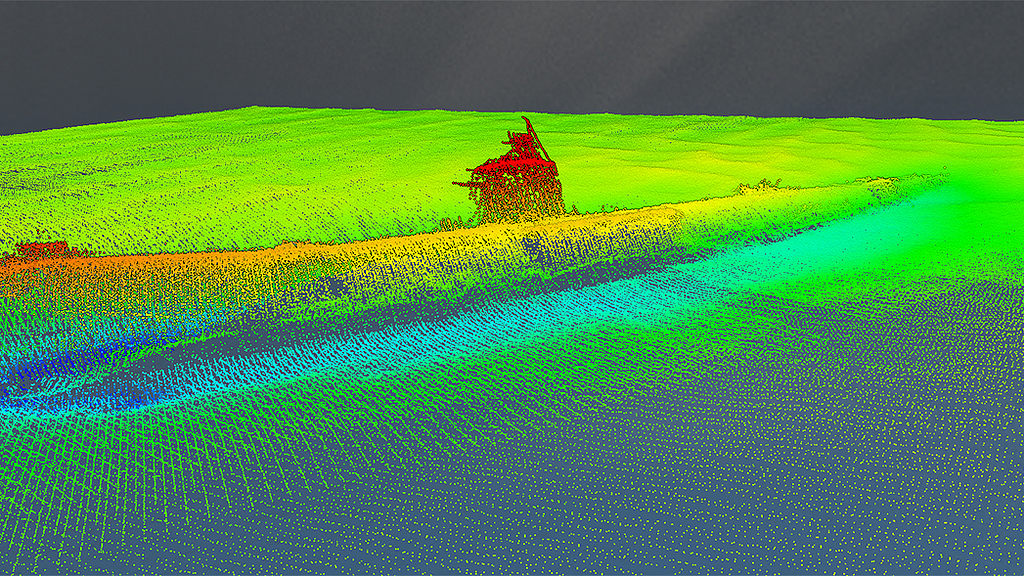Toxic Legacies of War - North Sea Wrecks
The North Sea holds an amazing underwater landscape with a unique record of historical relics from the two world wars. Hundreds of war wrecks lie on the seabed today and their dangerous cargo poses a insidious threat to the marine environment: Grenades, torpedoes and mines from which toxic substances leak out after decades.
How can this mostly invisible danger be researched? In the project "North Sea Wrecks" (2018-2023), these hazards were investigated in an interdisciplinary way with nine partners from five countries under the leadership of the German Maritime Museum and communicated to the public through a travelling exhibition. Dive to the war wrecks at the following stations and find out about the research, which has meanwhile been continued in a new project called "REMARCO" since 2023.
North Sea Wrecks Partner:
- German Maritime Museum - Leibniz Institute for Maritime History (DE)
- Aarhus University - Department of Geoscience (DK)
- Alfred Wegener Institute - Helmholtz Centre for Polar and Marine Research (DE)
- Flanders Marine Institute (BE)
- Institute of Toxicology and Pharmacology for Natural Scientists - University Medical School Schleswig-Holstein (DE)
- north.io GmbH (DE)
- Norwegian Defence Research Establishment (NO)
- PERIPLUS Consultancy (NL)
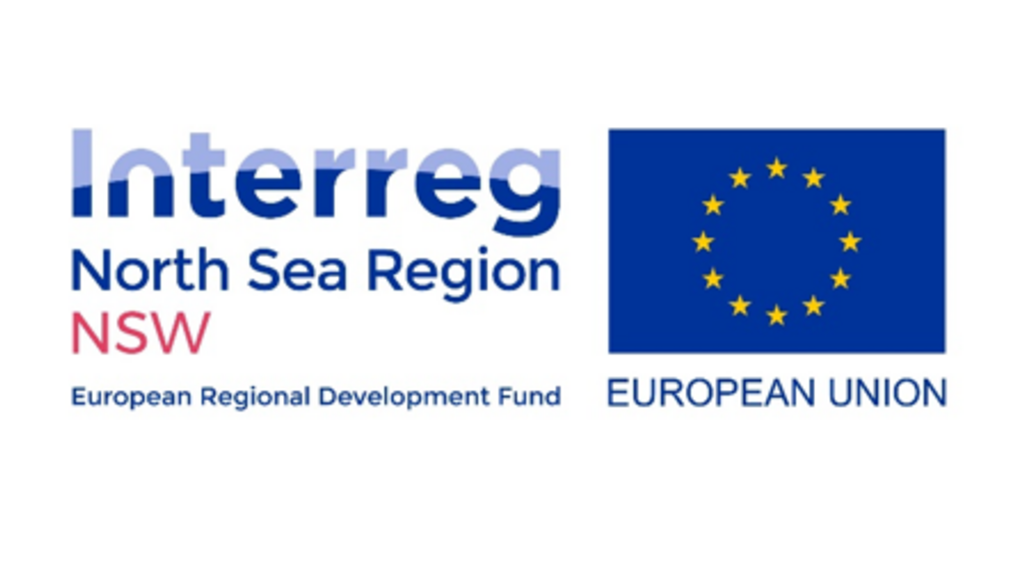
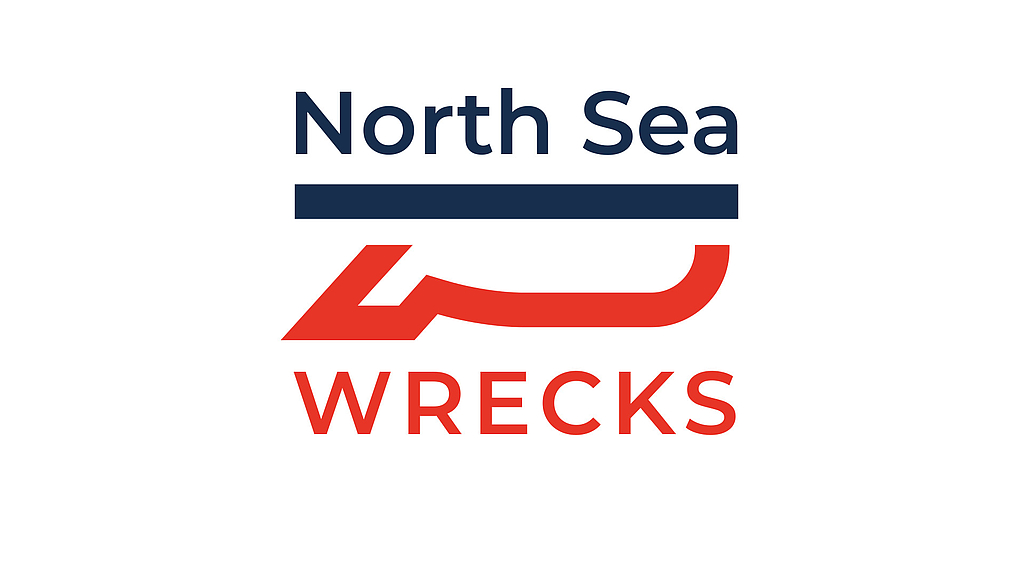
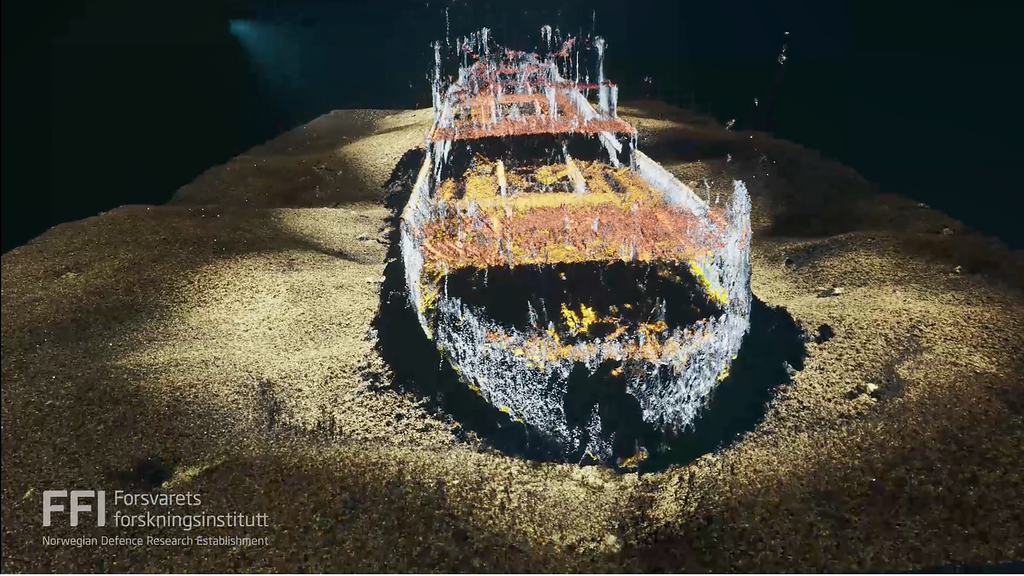
© Norwegian Defence Research Establishment (FFI)
Here you can find 3D Animations of wrecks already researched within the project.
Station 1
-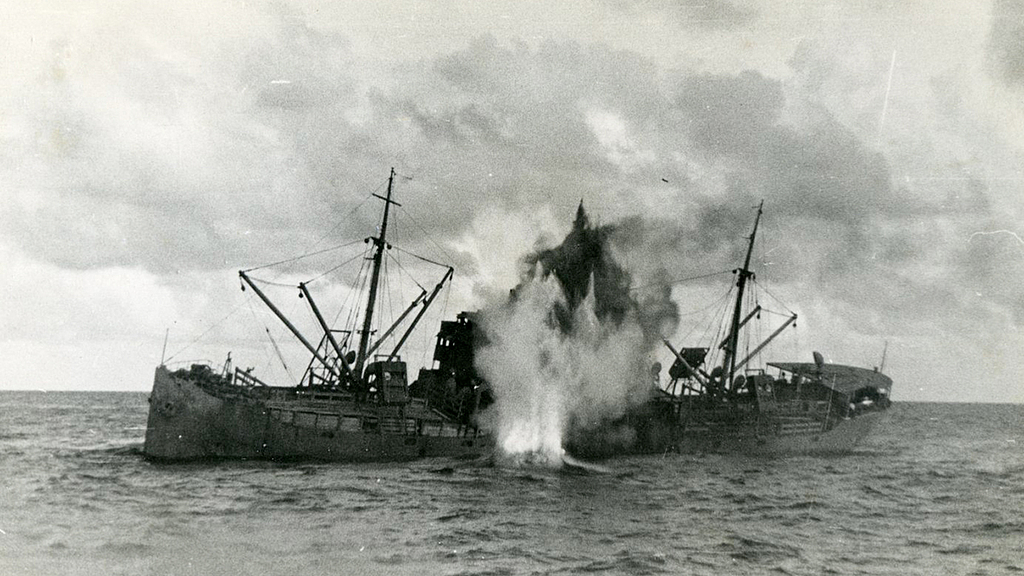
A ship is sunk during World War II © Photo Archive, German Maritime Museum
Decades on from the wars of the 20th century, munitions are still being found and defused on land. But what is the situation at sea?
Find out more about how they have affected the North Sea here!
Station 2
-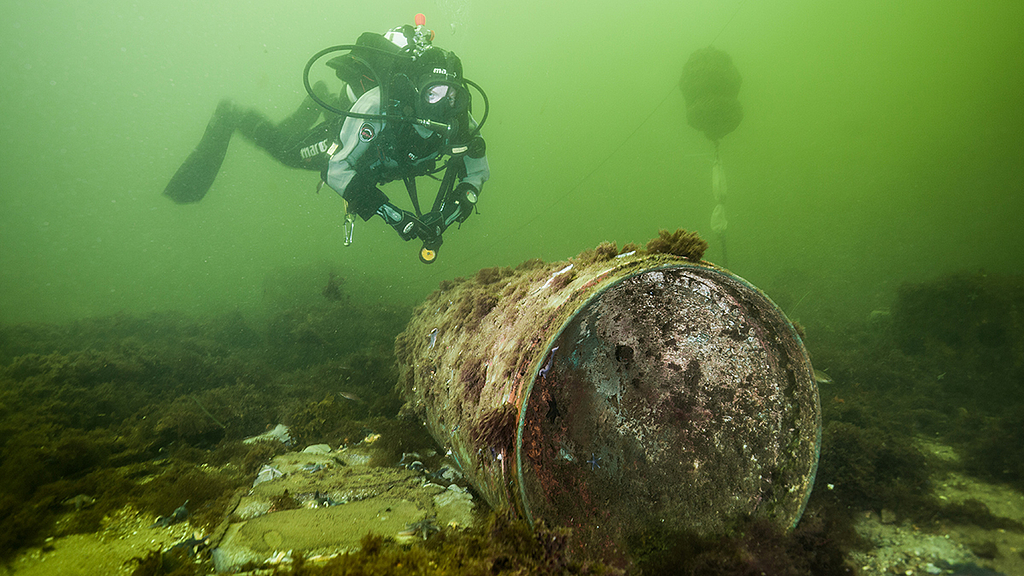
Scientific diver above ammunition in the Baltic Sea’s Kolberger Heide munition dump site © Jana Ulrich, GEOMAR
Munitions are dangerous – and not just at the moment they explode or are fired. Even when resting on the seabed, their toxic contents can leak out and contaminate the water.
Learn more about these hazards!
Station 3
-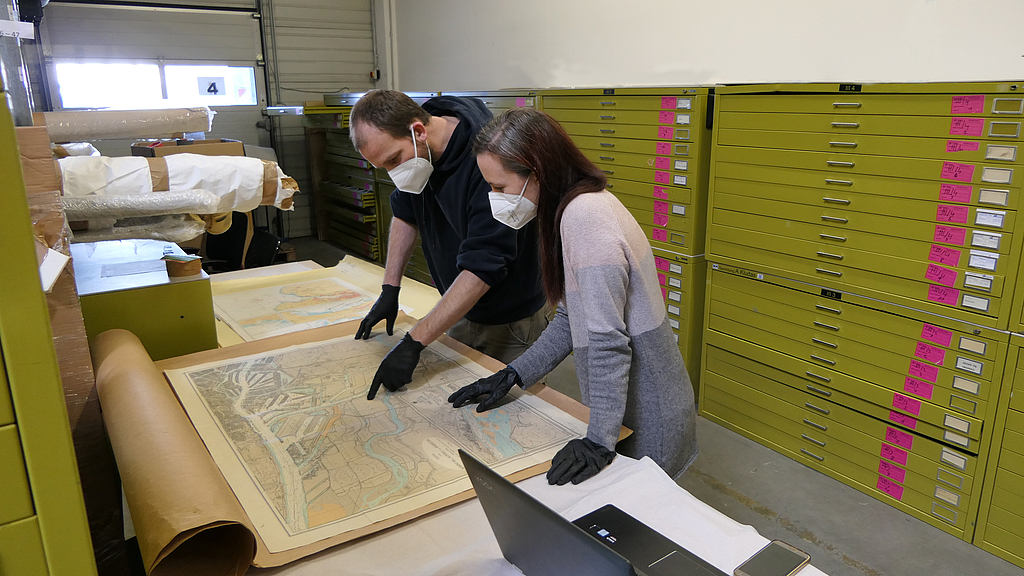
Philipp Grassel and Cornelia Riml researching historic naval maps in the archive of the German Maritime Museum © Cornelia Riml, German Maritime Museum
The journey to a North Sea wreck is a tortuous one, involving archive research, the planning of expeditions on research vessels and the coordination of divers.
Find out more about the individual aspects of our research here.
Station 4
-
Corroded artillery shell with visible explosives and young mussels © Forsvarets forskningsinstitutt (FFI) - Norwegian Defence Research Establishment
What happens when explosive material does not explode but is dumped at sea instead? As the munitions corrode, it will seep into the water. What impact does that have on the marine environment and the creatures living there?
Station 5
-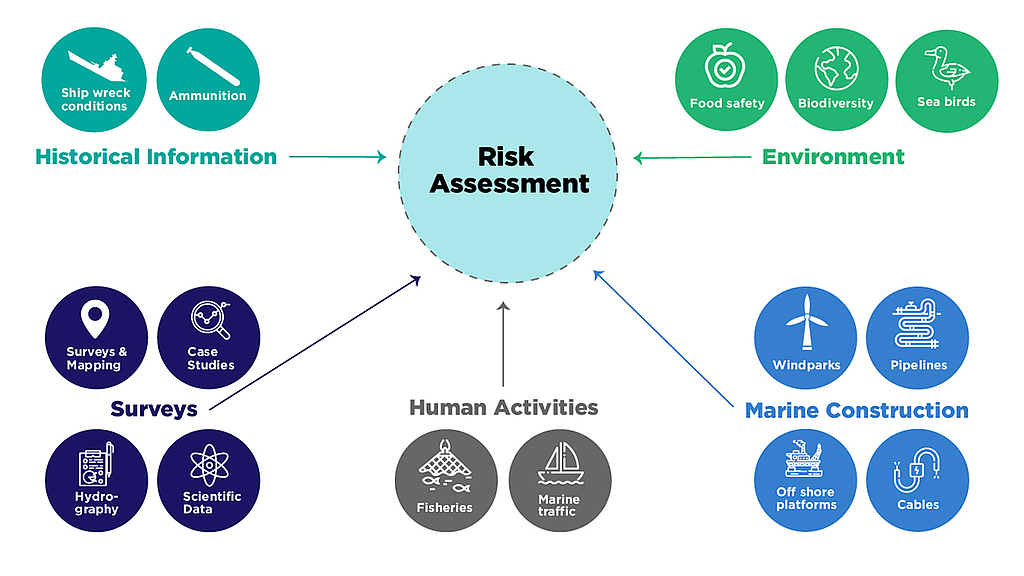
Data correlation in the WRECKNS software © north.io GmbH
There are many wrecks in the North Sea. But what risk do they pose? To determine this, we need a precise risk assessment.
Find out here how we do it!
Station 6
-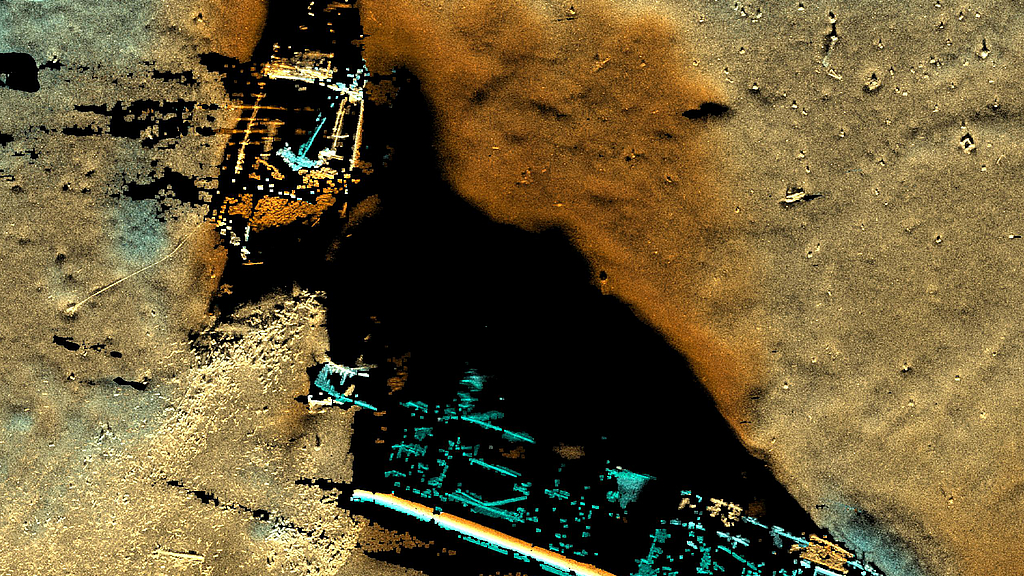
Sonar image of a cargo ship loaded with ammunition that sunk in the Skagerrak strait. Ammunition remnants are clearly visible as brighter dots in the central area of the broken wreck. © Forsvarets forskningsinstitutt (FFI) Norwegian Defence Research Establishment
Who is actually responsible for war wrecks and munitions dumped in the North Sea? Scientists from the North Sea Wrecks project have been exploring this question and are working up new recommended actions.
Find out here what we do!
Station 7
-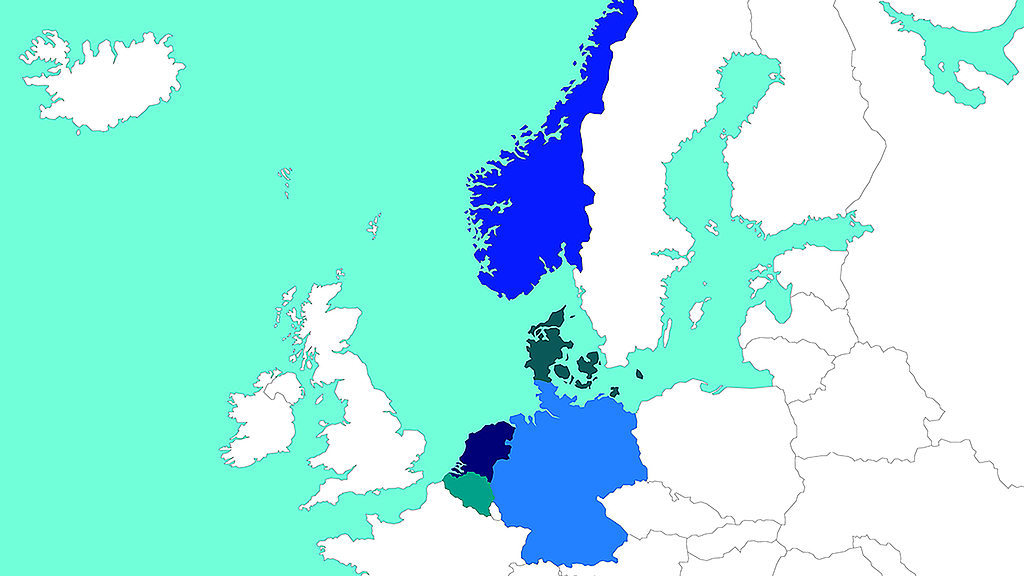
Nine partners from five different countries are working together in the Interreg project North Sea Wrecks. © simple GmbH
Seas do not recognise borders – neither marine species nor hazardous substances respect such boundaries. That is why the North Sea Wrecks project takes a transnational approach.
Station 8
-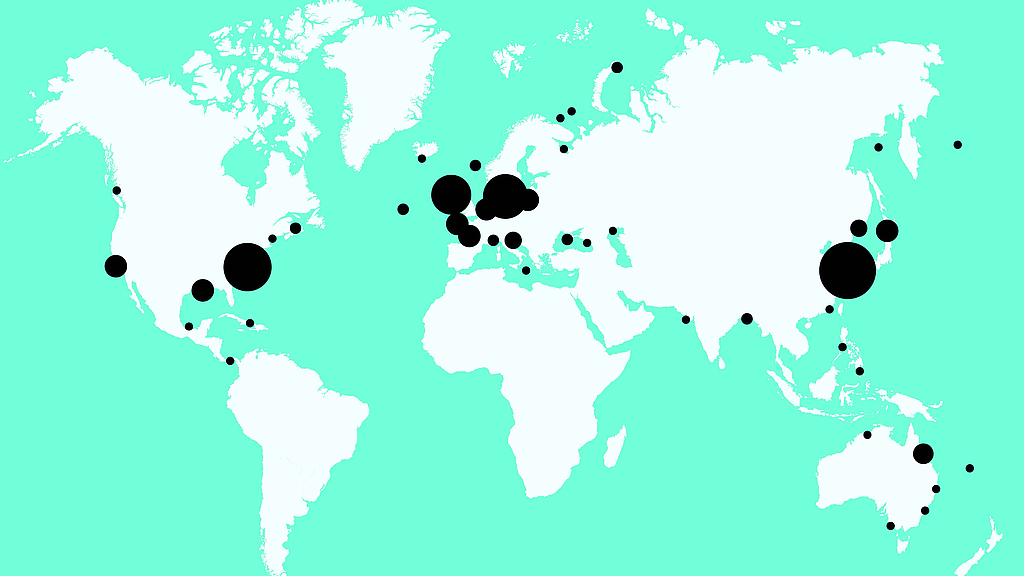
Marine munitions worldwide © north.io GmbH, Simon van der Wulp
Military relics such as wrecks and munitions threaten the health of the North Sea. Other marine regions are affected too, though, and further challenges lie ahead.
Find out here what we do!
Station 9
-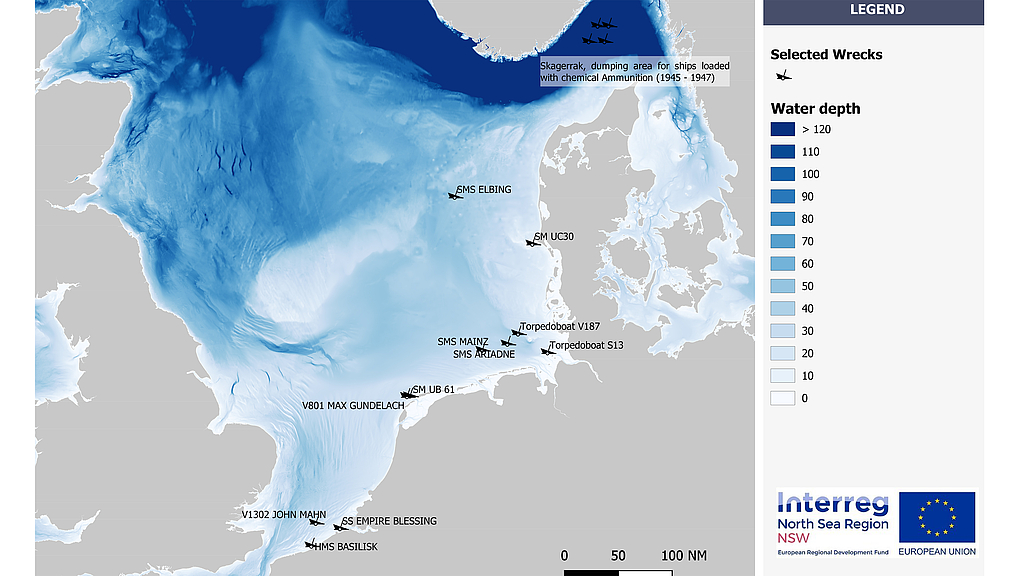
Selected wreck sites for surveys in the NSW Project as of June 2021 © north.io GmbH, Simon van der Wulp
Given that the North Sea is extensively littered with wrecks, we have to select some identified war wrecks as case studies for the project. We plan to visit these wrecks during the research cruises. As the project is still ongoing, the possible wreck sites worthy of sampling have not all been selected nor are all of the already chosen sites fully researched. So additional research cruises will happen. If you like to know more about the research methods, please see Station 3.
Imprint
-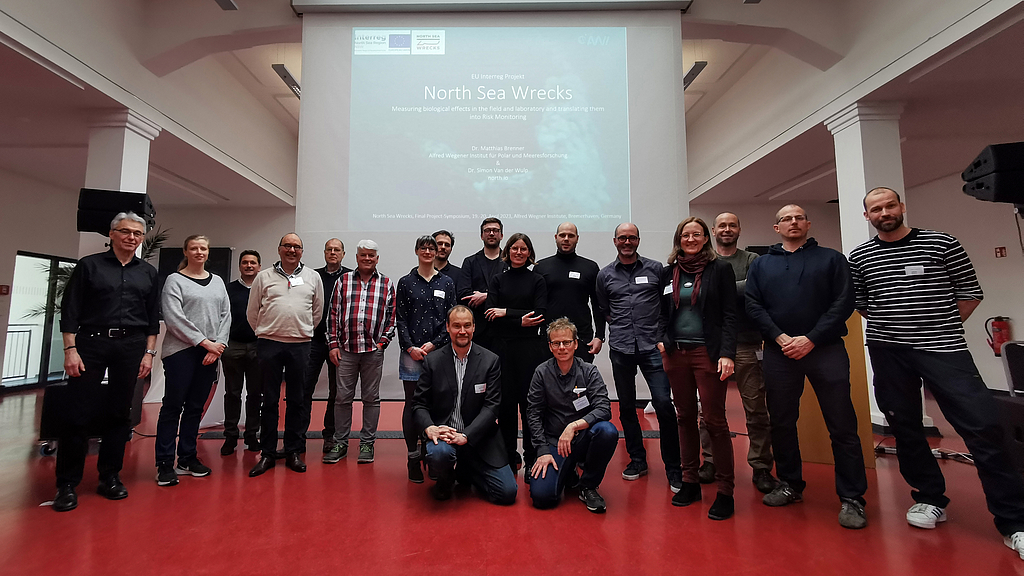
Group picture of the NSW partners. © Annica Müllenberg/DSM
Imprint The Project North Sea Wrecks
The North Sea Wrecks (NSW) project, funded by the European Union’s Interreg programme, is the first international project to address the issue of the potential hazard of wrecks containing munition to the North Sea ecosystem. The project combines a number of research disciplines such as scientific diving, marine environmental research, toxicological analysis, social, legal and political sciences and archive research. The results are displayed to the public via a series of events and this unique travelling exhibition. We would like to thank all institutions and persons involved for the good success of the project and the excellent cooperation. We would like to express our special thanks to Jenny Thomsen, Project Advisor from the Joint Secretariat – Interreg North Sea Region Program and the Advisory Board Chairmen of the Ministry of Energy, Agriculture, Environment, Nature and Digitalisation (MELUND) in Schleswig-Holstein/Germany, namely Claus Böttcher and Jens Sternheim.
Partner
-